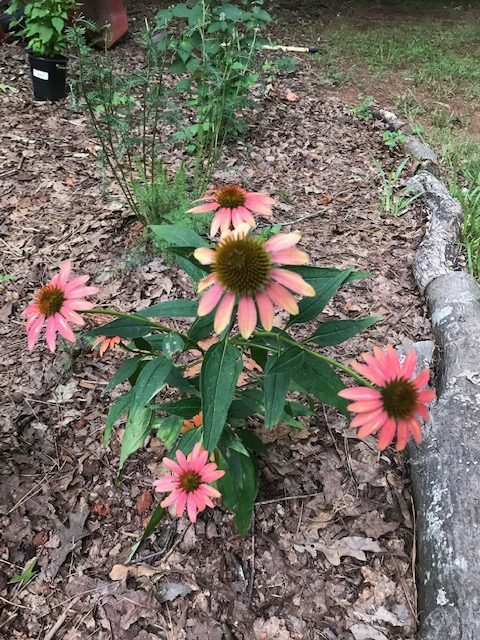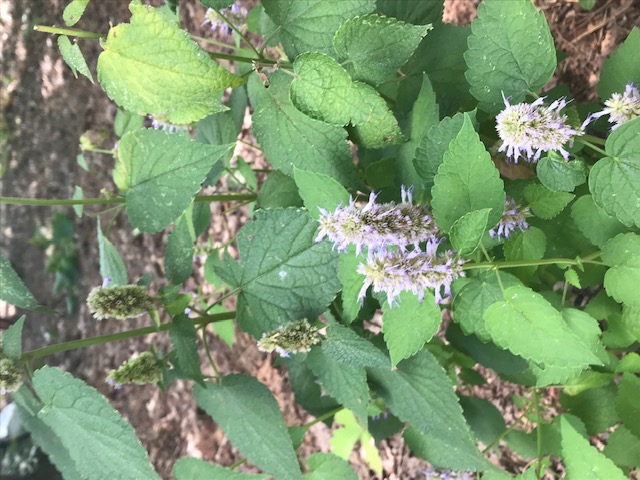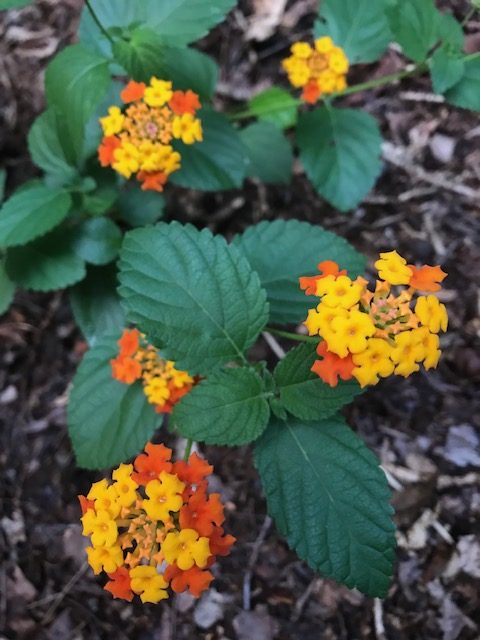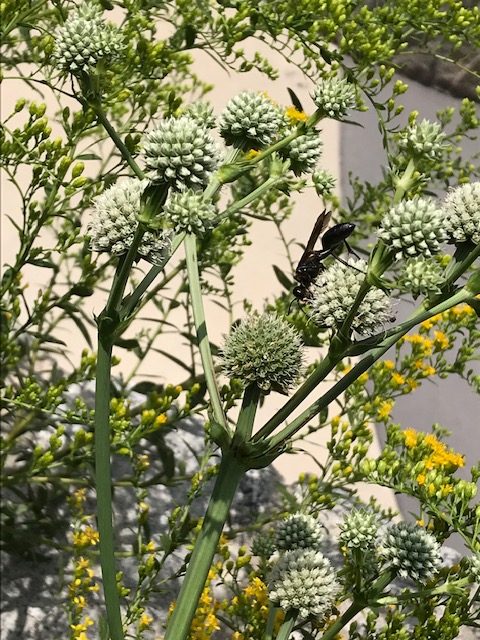The University of Georgia Cooperative Extension offers a fantastic online publication with resources for schools, and home gardeners, to help create a pollinator garden. A pollinator garden uses specific plants to draw pollinators like bees, wasps, butterflies, and hummingbirds to a specific area.
Favorites for full sun beauty, and pollinator draw in my garden
Asclepius tuberosa “Butterfly Weed”
This plant is spectacular. I noticed a few growing wild down by the roadside at the edge of my heavily wooded property. I got the shovel and dug one up! I left the other three to continue growing there. I found out they don’t transplant well, but this one survived and has now been in my pollinator garden for two years. The butterflies absolutely love it, and they fight each other over the flowers.


Pollinator planting is especially useful for me because I also grow vegetables in my raised beds. The nearby pollinator garden helps draw more pollinators to my veggie blooms too-therefore increasing my yields! I also try to pick plants that have beautiful blooms, or are Georgia native plants, or both.
Echinacea purpurea
This simple Southeastern native Purple Coneflower is one of my all time faves. It keeps the bees very happy, and a smile on my face all summer.




Agastache “Anise Hyssop”
One of my favorite new herbs, and therefore found all over my garden is the deer proof wonder Anise Hyssop. Delightful, long blooming, anise scented leaves, and pollinators all year make this a superstar favorite.

Lobelia cardinalis “Cardinal flower”


Another beautiful native plant. These bright red beauties are very charming and are hummingbird magnets. They begin to bloom in August, and the flowers march up the stem. I love watching the hummingbirds zooming in to feed from them. To my eye, the flowers also look like tiny hummingbirds.
Lantana ‘Sonset’
‘Sonset’ Lantana oozes summer heat & the colors can’t be beat. I bought three of these gorgeous, super drought tolerant, pollinator magnets while working at Cofer’s. Delivered from a nursery in Louisiana, the grower said it was the earliest, most cold hardy, and compact lantana ever. They are one of my favorite plants now, and the butterflies play in, and fight over the stunning color changing flower heads.



They are a smaller lantana-unlike that ‘Miss Huff’ showoff. These are 3-4 feet max, and stay smaller if keep minimally pruned.
Eryngium yuccofolium

This plant absolutely hums and buzzes with every manner of wasp, bee, and flying insect. I have rarely seen so many on one plant. This plant has uses in herbal folk medicine (it is also known as Rattlesnake Master), and doesn’t seem very attractive at first glance. It has long, thin yucca like leaves with spiky balls topping each stem. Once you give it a second glance though, it is truly a fascinating, beautiful plant. It is super unique, and provides loads of pollinators to your garden.
Woodland Sunflower Helianthus divaricatus
These woodland sunflowers fill the area under my grand white oak tree just off the back deck. They are super pretty and dark green, and I love watching them grow. I saw many of these in the mountains at Black Rock Mountain State Park when I visited. They shine in the shade under the tree canopy, and pleasantly brighten up the roadsides and trailsides.
The State Botanical Garden of Georgia has an incredible program called Connect to Protect that provides educational programming using native plants to support pollinators like birds and insects, and promoting native ecosystems.
Get out there and start your pollinator garden today!
Happy Gardening!








